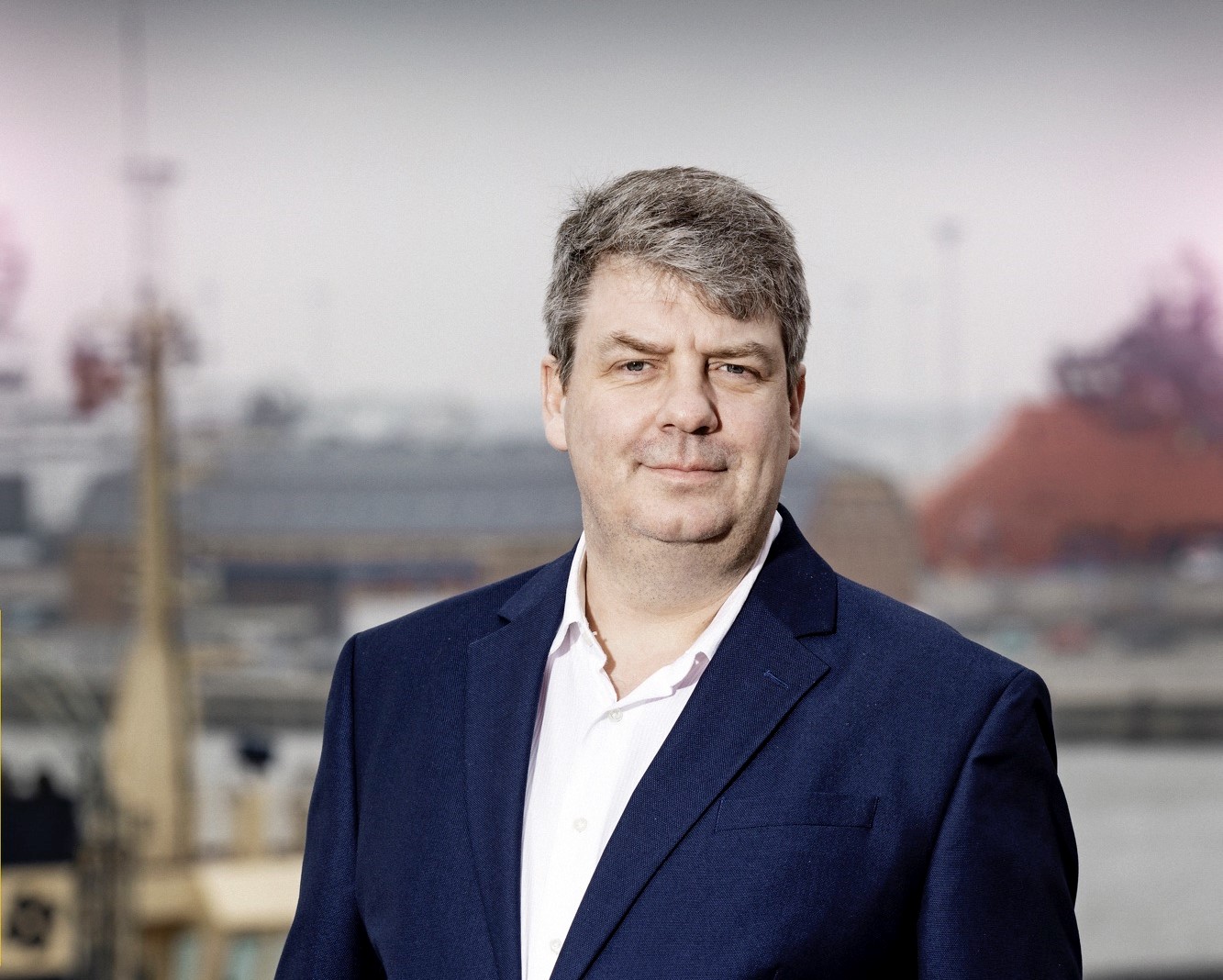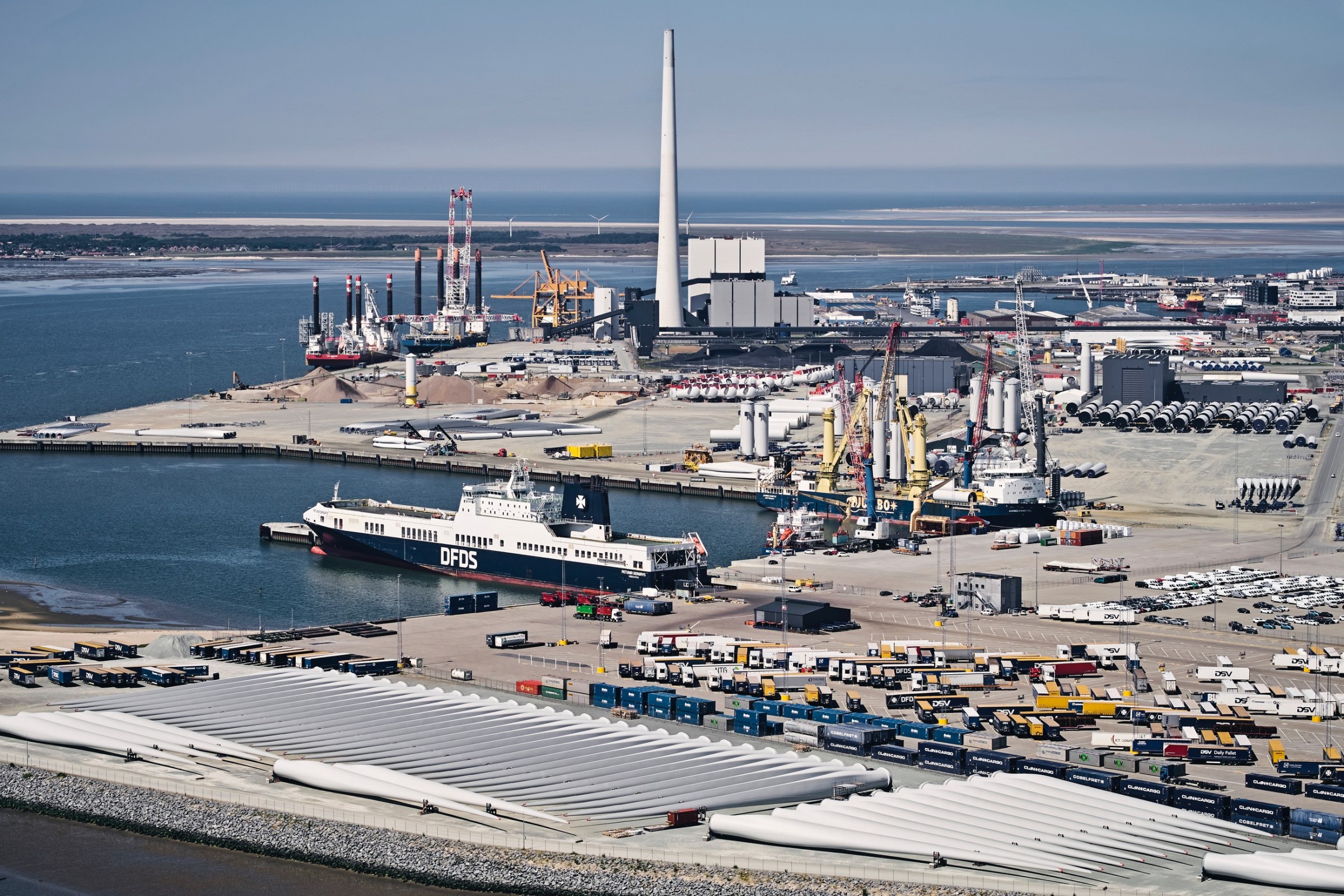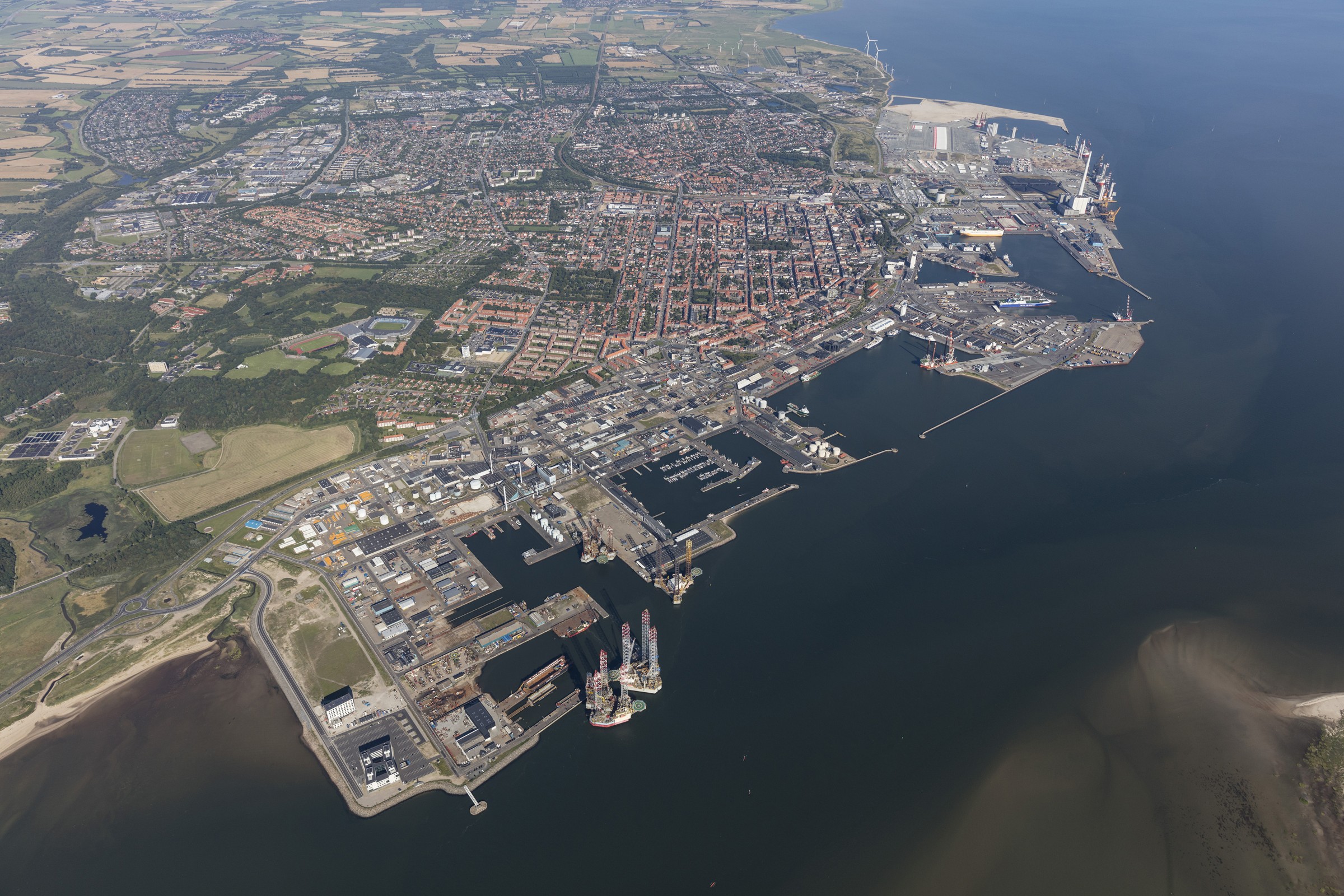31 August 2022
Our port pro of the month is Mr. Dennis Jul Pedersen, CEO of Port Esbjerg in Denmark. It is not by coincidence that the Port of Esbjerg was chosen to host the Offshore Wind Summit 2022, which included the signing of a joint declaration on ‘The North Sea as a Green Power Plant of Europe’ (Esbjerg declaration) by Commission President von der Leyen and different Heads of Government. In what follows, Mr Pedersen will give you all the reasons and take you on a discovery tour of the Port of Esbjerg.
 (c) Port of Esbjerg
(c) Port of Esbjerg
Can you briefly tell us about the Port of Esbjerg? What are its main characteristics and challenges?
The Port of Esbjerg is a rather young port as it is only 153 years old. It provides services for the wind industry as well as the oil and gas industry in Denmark. It is also specialised in the fishing industry. On top of its energy pillar, this TEN-T comprehensive port also fulfils a more “traditional” role by engaging in short-sea shipping (SSS) and Ro-Ro transport. Despise its small scale, the Port of Esbjerg hosts a very diverse range of businesses, amounting to around 200 companies within the port.
Around fifty percent of our revenues derive from offshore renewable energy (ORE). The port is used for the installation of windfarms, maintenance, vessel preparation and serves as a hub function for on- and offshore wind components in all parts of Europe.
Has the transition to more offshore renewable energy had a positive impact on jobs over the last few years? Does the port always have the support of the city of Esbjerg for this development?
There are still more jobs related to the oil and gas industry around the city of Esbjerg but this will probably change in the coming years thanks to the offshore renewable energy (ORE) industry. We see around 4000 jobs being created in the city as regards the offshore renewable energy sector.
The Port of Esbjerg is self-governing and provides a quarter of the city’s overall jobs. The city didn’t exist before the port was built, so Esbjerg is really a port city. The port takes many responsibilities towards the city while the city provides a lot of support to the port.
What is your long-term vision for the Port of Esbjerg?
The long-term strategy of the port is very much focused on offshore wind in the North Sea and in Denmark in particular. In Denmark, the first wind turbine was installed onshore in the seventies. Hinterland factories were building these wind turbines. Nowadays, a lot of wind turbines are offshore, however this did not change the production sites. Some of the first offshore windfarms were being built here in Denmark in the North Sea 20 years ago and the port consequently became part of it when the whole supply chain grew around it. In Europe, today, there are 112 windfarms and a little over 1300 companies involved. Out of these, around 300 are Danish companies, including 80 located in the port of Esbjerg and its surroundings. With the Esbjerg Declaration, we are punching higher than we have ever done because, comparatively, the offshore wind capacity installed in Denmark is very small in the European context. Denmark today has less than 10% of the offshore wind capacity installed in Europe. This Declaration makes a big difference for the port by relaunching the interest in offshore renewable energy.
On 18 May you had very high-level visitors. The signing of the Esbjerg Declaration on 18 May was a historical event for both the port and the city. Denmark, Belgium, the Netherlands and Germany have set joint targets for offshore renewable energy. Why was the Port of Esbjerg chosen as location?
Our port was chosen for its hub function in the offshore renewable energy industry. The high-level visit brought many European port CEOs to visit our port. They could also enjoy the famous selfie with Commission President von der Leyen.
 (c) Port of Esbjerg
(c) Port of Esbjerg
The Port of Esbjerg is an energy port, being the primary base for the Danish oil and gas industry. The EU, with its Green Deal ambitions and the recently published REPowerEU plan, is striving to get independent from Russian fossil fuels as well as climate neutral by 2050. As an energy port, how do you anticipate the projected changing energy landscape in Europe? Within this changing energy landscape, what are the business opportunities for your port?
The Port of Esbjerg still handles oil and gas but it is a different business than the offshore energy sector. The oil and gas sector doesn’t require the same amount of port development and space. The sector’s infrastructure remains the same as previously, meaning there is no need to modify the quay side or dredge some parts of the port. On the contrary, the offshore energy industry is way more demanding and requires much more space and constant adaptation. The space in port areas might indeed become a bottleneck for the implementation of the Esbjerg Declaration. Our port also cooperates with other offshore wind ports around the North Sea to try to overcome this barrier. We are already adapting the hinterland links for the whole offshore renewable energy supply chain to operate properly. However, at one point we are going to hit the size limit for transportation of wind turbine components by road and we will therefore have to move them around by other means such as ships.
As wind turbines are getting bigger, their efficiency is also increasing. Whereas it took approximately 28 days to install the first offshore wind turbine 20 years ago, it now takes only 12 hours. Consequently, the port needs to have all the equipment ready and have the necessary million square meters available for a short duration. One of the challenges from the port perspective is to have large areas available and be willing to rent it for a short time (a few months lease). This is not the business model ports are used to work with compared to the usual Ro-Ro and container terminals. As a smaller port, our tariffs are very appreciated by our many offshore wind customers.
As a self-governing port, we also have to consider the social and economic effects. We do not necessarily need to have the biggest return on investment. What we need is to be able to create jobs for Esbjerg and its neighbouring areas. Our port is mission-driven.
The European Commission proposed a review of the TEN-T policy. Currently, the inclusion of ports into the TEN-T network is mainly determined by their annual throughput volumes. ESPO believes that transport volumes should not be the only decisive factor. Other considerations, such as the port role in terms of energy transition and sustainable transport solutions should also be taken into account. Has the port benefitted from being part of the TEN-T comprehensive network?
Indeed, we are a “comprehensive” TEN-T port. I believe goods will always flow where it makes the most sense. Here in the Port of Esbjerg we have five Ro-Ro routes connecting to 26 destinations. So, in a way, Esbjerg is getting very close to the “core port status” even if we are only a comprehensive port. Shipping via Esbjerg is the most economically feasible and the best way to send the goods, even though it is not part of the TEN-T core network. How are we able to be a comprehensive port if we are not acknowledged for building up these new important routes?
Regarding the offshore renewable energy business, your port became important to NATO. Can you tell us why?
The Port of Esbjerg has always been important for NATO. Today, this is more relevant than ever. Indeed, military equipment needs ample storage space, similar to offshore wind components. Our port is always improving its land space for offshore renewable energy business and therefore has large areas available on short notice for NATO as well.
The Esbjerg Declaration also wants to tap new potential for green hydrogen, a rare commodity whose demand is expected to increase sharply in the coming decades. Are there any hydrogen projects being realised in the port?
As for Power to X (PtX), we currently have three projects related to hydrogen ongoing at the port: 1 GW hydrogen project, as well as a smaller one, and then another big project for ammonia amounting to 1 GW to serve the Danish farming industry and future fuels.
We follow closely the discussions at European level on the Alternative Fuels Infrastructure Regulation (AFIR) and the whole Fit-for-55 package in general.
In Denmark we are jumping straight into the hydrogen and ammonia business without going through the LNG phase. The port managing body is buying a part of the hydrogen production coming from the first small hydrogen project here at the port. I think we are one of the only ones actually using hydrogen at the port. We have created a shore power system with hydrogen fuel cells. What is not used at the port is then sold to the market.
 (c) Port of Esbjerg
(c) Port of Esbjerg
Since January, vessels calling at the Port of Esbjerg have been able to connect to onshore power supply (OPS). How many quays are equipped with OPS? Which ships are able to connect to it? How is this financed, and what stakeholders are involved in contributing to the deployment of OPS at your port?
At the Port of Esbjerg, there are ten systems to connect ships to shore power. A few years ago, when we decided to calculate the CO2 emissions of ships calling at our port, we started a series of studies to figure out where it makes the most sense to install OPS. The most economically feasible option was to connect smaller vessels that are working regularly at the port. We were able to reduce CO2 emissions by 25% in one year by connecting the small service vessels to shore power for hours during the winter time. We decided not to install OPS at berths where big ships come because they only connect for a couple of hours and we are not sufficiently equipped with the grid. Actually, we believe hydrogen fuel cell is the future solution for these bigger ships.
How did you get into maritime transport? How did your career path lead to this position?
I do have a maritime past. I first worked in the oil and gas industry and then moved to the offshore renewable energy industry in which I ran various companies. Nowadays, to run a port, you need to have a good understanding of your customers’ business. It helps to have knowledge in the energy sector. I regularly discuss with trade organisations, policy-makers and politicians.
To read more about the changing role of ports when it comes to energy and what this means in terms of infrastructure, consult the ESPO-EFIP study on the new energy landscape and its impact on and implications for European ports. You can also directly download the study which was published in June 2022.
Related documents
No attachments.
